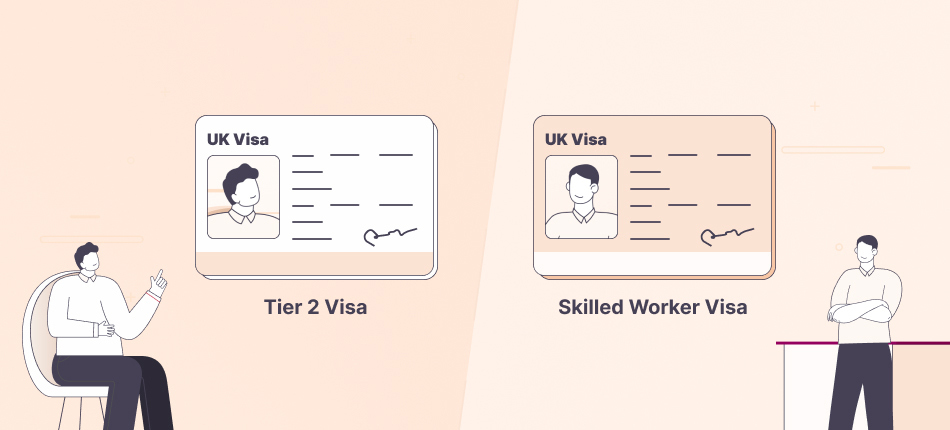Introduction
The UK’s immigration system has undergone significant changes in recent years, particularly with the replacement of the Tier 2 (General) Visa by the Skilled Worker Visa in December If you're planning to work in the UK, understanding the differences between these two visa types is crucial. This guide highlights the key distinctions, helping you navigate the new system with ease.
What Was the Tier 2 (General) Visa?
The Tier 2 (General) Visa was the main route for skilled workers to migrate to the UK for employment. It was part of the UK’s Points-Based Immigration System, introduced in 2008, and required a job offer from a UK employer who was a licensed sponsor.
What is the Skilled Worker Visa?
The Skilled Worker Visa replaced the Tier 2 visa after the UK exited the EU. It is designed to attract global talent and aligns with the UK's new points-based immigration system. This visa applies to both EU and non-EU citizens, reflecting the post-Brexit immigration reforms.
Key Differences Between the Tier 2 Visa and the Skilled Worker Visa
1. Points-Based Criteria
- Tier 2 Visa: Applicants had to meet specific criteria like job offer, salary threshold, and English proficiency.
- Skilled Worker Visa: The system is more flexible. Applicants earn points based on factors like job offer, salary, education level, and whether the job is in a shortage occupation.
2. Salary Threshold
- Tier 2 Visa: The minimum salary requirement was generally £30,000 annually.
- Skilled Worker Visa: The threshold has been lowered to £38,700 annually. For shortage occupations, the threshold can be as low as £30,960.
3. EU Nationals Inclusion
- Tier 2 Visa: Focused solely on non-EU workers.
- Skilled Worker Visa: Applies to EU, EEA, and Swiss nationals post-Brexit.
4. Occupation List
- Tier 2 Visa: The shortage occupation list was more restrictive, limiting the scope of eligible jobs.
- Skilled Worker Visa: Broader range of jobs eligible under the updated Shortage Occupation List.
5. Labour Market Test
- Tier 2 Visa: Employers had to prove they couldn’t fill the position with a resident worker (Resident Labour Market Test).
- Skilled Worker Visa: This requirement has been abolished, making the process faster and less restrictive for employers.
6. Dependents
Both visas allow dependents to accompany the visa holder, but the Skilled Worker Visa extends this privilege with more flexibility in sponsorship requirements.
7. Settlement Pathway
- Tier 2 Visa: After 5 years of residence, applicants could apply for Indefinite Leave to Remain (ILR).
- Skilled Worker Visa: Retains this pathway but with updated rules on salary and other conditions.
Which Visa is Better for You?
The Skilled Worker Visa is more accessible, flexible, and inclusive compared to the Tier 2 Visa. Its lower salary thresholds and removal of the Labour Market Test make it a popular choice for both employers and skilled workers worldwide.
For more details, visit the official UK Government Skilled Worker Visa page.
Conclusion
The transition from the Tier 2 Visa to the Skilled Worker Visa marks a shift towards a more streamlined and inclusive immigration system in the UK. By understanding these changes, skilled workers can better prepare their applications and take advantage of the new opportunities.









